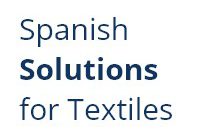The Global Textile Machinery Market: Inside the Shifting Tides of Global Textile Machinery Shipments
The Global Textile Machinery Market: Inside the Shifting Tides of Global Textile Machinery Shipments
A Strategic Window for Spanish Technology Providers
The global textile machinery industry is a market in motion, and the latest data from the International Textile Manufacturers Federation (ITMF) confirms a year of strong transformation. Their last annual report paints a picture of deep contrasts: while some traditional sectors are contracting, others are experiencing a powerful surge.
This realignment is not just a story of numbers; it’s a story of opportunity. As manufacturers worldwide pivot towards higher-value, specialized, and more sustainable production, the door is opening for Spanish innovation-led suppliers, particularly those who excel in these exact areas.
Mixed Global Trends: Decline in Spinning, Growth in Value-Added Segments
The 2024 data reveals a clear divergence. The mass-market cotton spinning sector is cooling after years of heavy investment, while machinery for synthetics and specialized applications is booming.
- Spinning: Shipments of short-staple spindles and open-end rotors saw significant drops of -40% and -39% worldwide, mostly due to a market correction in Asia. In a sharp contrast, long-staple spindles (for wool and premium fibers) rose by +62%, with Eastern Europe and parts of Asia driving the rebound.
- Texturing & Weaving: Shipments of draw-texturing machinery surged: single-heater spindles jumped by +95%, and double-heater models by +80%, signaling massive investment in synthetic yarn processing. This was mirrored in weaving, where shuttle-less looms increased by +32%, led by strong growth in water-jet (+56%) and air-jet (+10%) categories, both essential for modern fabric production.
- Knitting: The knitting world was also split. Flat knitting machines, used for value-added «knit-to-shape» garments, grew by +16%. Meanwhile, large circular machines, used for bulk fabric, contracted by -15%.
This data confirms a global shift away from sheer volume and toward machinery that enables differentiation, performance, and functionality.
Finishing: A Key Growth Segment Where Spain Excels
Nowhere is this trend more apparent than in the finishing segment, where fabric gets its final value. The sector registered a modest overall increase (+6%), but specific technologies stood out: stenter shipments climbed by +22%, and hotflue dyeing lines soared by an incredible +390%.
These are precisely the segments where Spanish machinery manufacturers bring unmatched expertise. Companies featured on Spanish Solutions for Textiles are global leaders in developing finishing solutions that combine decades of process know-how with cutting-edge energy efficiency and advanced automation. As the industry faces pressure to reduce its environmental footprint, this focus on sustainable and high-performance finishing is more critical than ever.
Key Findings summary
- Spinning: The market was deeply divided. Shipments of short-staple spindles (-40%) and open-end rotors (-39%) saw sharp declines from 2023 levels. In contrast, long-staple (wool) spindle deliveries surged by +62%, driven by demand in Iran, China, and Vietnam.
- Texturing: This segment experienced explosive growth. Single-heater draw-texturing spindles grew by +95%, and double-heater spindles (for polyester) increased by +80%. Asia accounted for over 98% of shipments, with China alone receiving 95% of double-heater spindles.
- Weaving: Shipments of shuttle-less looms grew by +32%. This was fueled by a massive +56% increase in water-jet looms and a +10% rise in air-jet looms. Rapier/projectile loom shipments, however, fell by -7%. Asia was the destination for 97% of all new looms.
- Knitting: This sector showed mixed results. Large circular knitting machine shipments decreased by -15%, while electronic flat knitting machines saw a +16% increase. China was the lead investor in both categories, though its investment in circular machines fell significantly.
- Finishing: The overall finishing segment saw a slight increase of +6%. Shipments of stenters (fabric continuous) rose by +22%. In the discontinuous category, deliveries of air-jet and overflow dyeing machines grew, while jigger/beam dyeing machines dropped by -44%.
The Big Picture: Key Takeaways from the 2024 Report
- Asia is the Center of the Universe: The statistics are overwhelming. Whether it’s spinning (90%), weaving (97%), or texturing (98%), Asia is where virtually all new textile machinery investment is happening.
- The China Engine Roars On: China is not just the biggest player in Asia; it is the single largest investor globally across almost every category. The health and direction of the Chinese textile industry have a profound impact on the entire global machinery market.
- Synthetics are King: The massive, coordinated growth in texturing machinery and water-jet looms points to one undeniable conclusion: the industry is heavily invested in the production of synthetic fibers, particularly polyester.
- A Shift Towards Value: The growth in long-staple spinning and flat knitting suggests a parallel trend. While the mass market may be correcting, there is strong investment in machinery for higher-value, specialized, and more complex products.
Spain’s Value Proposition: Precision, Adaptability, and Global Reach
The current market realignment plays directly to the strengths of the Spanish textile machinery sector. With a long-standing reputation for robust engineering, Spanish suppliers are known for:
- High-Value Specialization: Unparalleled strength in finishing, dyeing, and texturing machinery.
- Digitalization & Automation: A growing focus on Industry 4.0 solutions that improve efficiency and traceability.
- Reliability & Sustainability: Tailor-made solutions engineered for high performance, low consumption, and long-term reliability.
This powerful value proposition is why Spanish companies are gaining ground in key markets across Asia, Latin America, and North Africa. They are not just selling machines; they are delivering trusted partnerships built on adaptability, quality, and world-class service.
Final Takeaway
The textile machinery market is not just recovering, it’s transforming. The era of investing in volume alone is giving way to a new focus on smarter, more specialized, and sustainable equipment. For manufacturers seeking trusted partners to navigate this new landscape, Spanish technology stands at the forefront of the industry’s next chapter.

